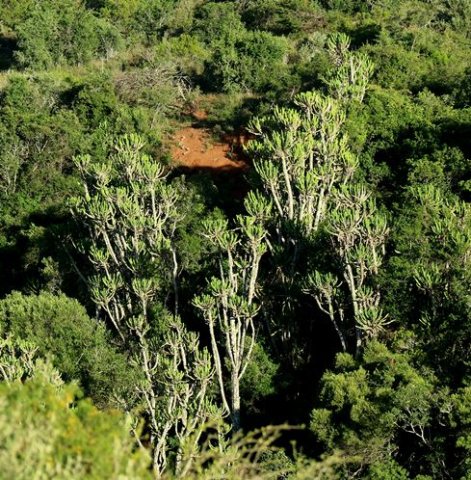Euphorbia triangularis grown tall

Euphorbia triangularis trees are conspicuous in some valleys of Albany thicket near Addo, taller than many of the surrounding leafy trees. The erect stems branch, sometimes at the base to form clumps as in the grove in picture. The pale grey stems lose their small side-branches lower down, retaining only those few that also branch substantially at their tips. The angled stem-shape disappears from the old stems lower down.
Every stem-tip has a green rosette of thick, succulent stems arching up into a flat top of spaced stems that photosynthesise, as neighbouring trees do in their leaves. These curved green stems may reach 2,5 m in length. Three-angled stems are common in the Eastern Cape, up to five-angled stems are more seen in KwaZulu-Natal.
Traditions related to this tree include burning of dry branches on fields for crop improvement (Coates Palgrave, 2002; Van Wyk and Van Wyk, 1997; Pooley, 1993).

